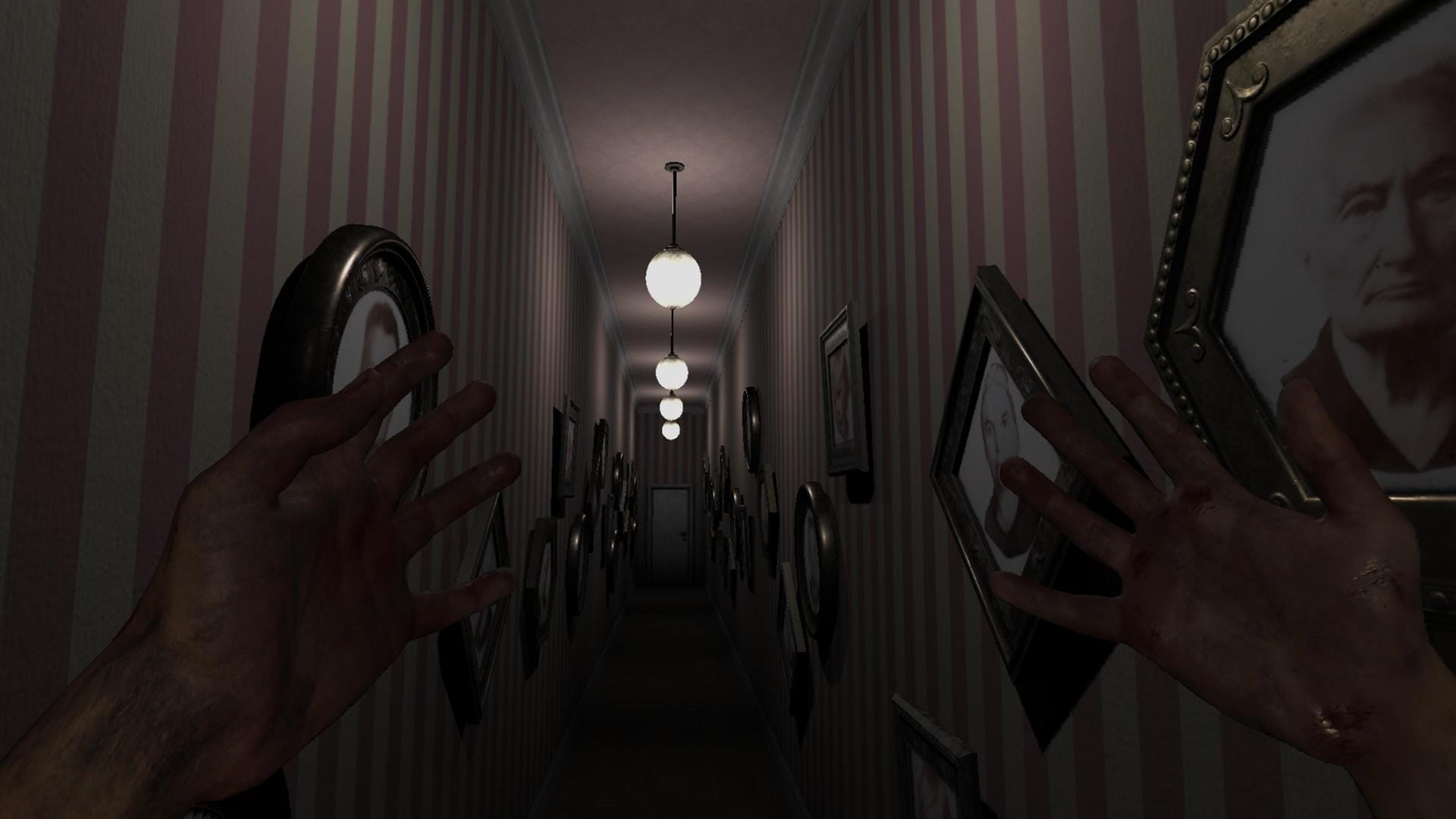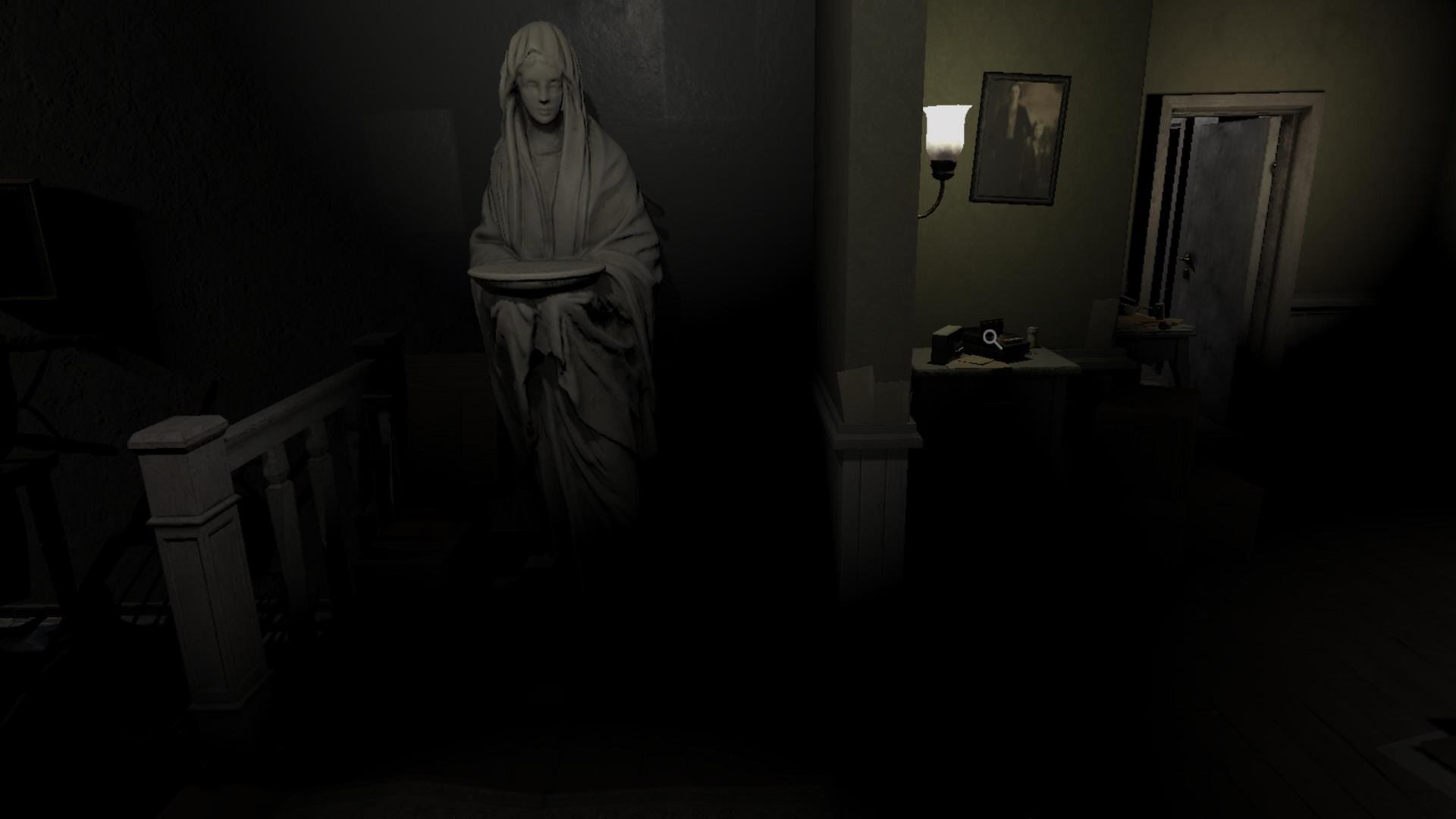MADiSON VR revisits the setting of Bloodious Games’ terrifying debut offering. How does this VR adaptation fare? Find out in our official review:
Every so often, developers grace fans with VR updates or adaptations of hit titles. We’ve seen the likes of Phasmophobia VR, Resident Evil 4 VR, Resident Evil 7: Biohazard VR and now we’ve got MADiSON VR, a psychological horror game that takes players on a surreal journey through creepy locales. If we solely consider the atmosphere and rising tension, then MADiSON VR certainly deserves a spot in our best VR horror games list. Sadly, the game is also marred by frustrating movement, janky controls, and obtuse puzzles.
MADiSON VR, an adaptation of the 2022 horror game, puts you in the shoes of Luca, a teenager who finds himself trapped in a large manor. Right from the get-go, you realize that something sinister has happened here, with Luca attempting to escape each room only to find himself in yet another strange chamber. Oh, and it seems a demon might have possessed him, too.
MADiSON VR succeeds in immersing you in its setting thanks to a clever combination of psychological horror and jump scares. The former harkens back to 2014’s P.T., given that you explore multiple rooms and corridors, with some background objects or furniture shifting or changing ever so slightly. At times, a light may flicker to reveal a marble statue at the end of the hallway. Look again, and it’s as though the same statue moved to the right instead. Then, just as you start to feel safe, something might jump out of the corner of your eye. Yes, the game does have plenty of jump scares, but they don’t necessarily feel cheap either.
One key mechanic in your MADiSON VR playthrough is the use of the instant camera. At certain points, you have to take pictures of objects, and these photos often hold clues.

It was certainly a treat to experience this concept with VR controls. Using the camera required me to move my controller from over my shoulder to bring it out, which was then followed by pressing a button to snap a photo. Next, my other hand would pull out the picture and wiggle it until the image was fully developed. Collecting and keeping items, albeit with limited inventory slots, also worked in a similar manner (i.e. pick them up and fling them over your shoulder).
Similarly, using the camera could trigger rumblings or shifts, altering some part of the house that you should check out. Likewise, the camera can be used to “bridge the gap” of sorts, transporting Luca to other locations, be it a ruined chapel, a grimy sewer, or other destinations filled with macabre scenes. The further you progress, the weirder and more bizarre the incidents and surroundings.
As someone who played the original MADiSON, I had an inkling of what happens in each section of the roughly six-to-seven-hour campaign, but nothing could thoroughly prepare me for the VR experience. Every creaking floorboard, every audible thump in a corner, and every malicious whisper caused mounting dread and an atmosphere like no other. The haptic feedback from the PSVR 2 Sense Controllers - which kicked in whenever I bumped into an object and the PSVR 2 headset whenever Luca suffered from migraines, further added to the tension.

I can genuinely state that MADiSON VR kept me at the edge of my seat for most of my playthrough, making it a truly stellar horror game that’s also bogged down by a few notable flaws.
Firstly, MADiSON has some of the most obtuse and mind-boggling puzzles I’ve ever seen. In fact, when I played the original last year, I had to consult guides multiple times because I missed out on particular tidbits, clues, or items. This is a fundamental flaw, and one that remains present in MADiSON VR. It came to a point when, as I was attempting a puzzle during the course of my review, I found myself exclaiming how the logic itself didn’t make sense.
This is further compounded by items that are hard to spot in the dark, as well as clues that are tough to decipher due to extremely tiny symbols and icons. In the flatscreen version, photos with clues are slightly enlarged when you examine them and the pictures themselves are properly aligned. This isn’t the case in the VR version–symbols are smaller and photos can even appear tilted or cropped. The idea, then, is to make a grabbing motion with your hand to bring the photograph closer to your face, which can lead to a bit of discomfort. You’d have to do this a few times as well, unless you’ve memorized the hints.
Secondly, MADiSON VR is bound to frustrate you with its slow character movement, janky controls, and related concepts. For reference, I mostly play VR games while sitting down, and I found myself adjusting my play area every now and then just because I had to pick up items on the ground.
In other VR games, this action would only require you to look down, bring out your dominant hand, and then you’d see a contextual icon to grab an object. In MADiSON VR, I had to press the crouch button, completely bend down, and then stretch my right hand until it touched the floor. You also need to do the same thing if you’re playing while standing up.
Editor's note: Since publication, we've been made aware of a control option that allows you to 'magnetically' grab items from afar. This was not apparent until a recent update that went live after this review.

There were other segments where I had to grab items inside niches and small nooks. Because some furniture got in the way, I had to bend down and then extend my hand just for the contextual icon to pop up. One method to alleviate this issue is the Height Offset option, mentioned in our section regarding comfort, but the process itself felt so contrived.
Likewise, opening drawers, shelves, and doors can be downright annoying. This requires grabbing a latch or doorknob with your dominant hand, before doing a pulling or pushing motion. Unfortunately, slightly nudging an object with either of your hands also causes it to close.
Furthermore, some of these contextual actions don’t really match what you’re supposed to be doing in-game. I recall the times when I had to access a safe or climb up a ladder. My first inclination was to press the grab button, thinking that I would have to turn a lever or hold the railings (actions you’d normally expect from VR games). Little did I know that I simply had to turn my hand, palm up, to make an icon appear–one press of the interact button and the action magically happened.
Comfort
MADiSON VR can be played while sitting down or standing up. The game has both smooth turning and snap turning options, with the latter allowing you to tweak the turning angle to your liking. You can change your dominant hand, as well as set the forward direction based on your headset or either controller.
There’s also the Height Offset slider, which can be used to change the character’s height/view relative to the ground. We recommend this option in case you have to pick up items on the floor, lest you end up kneeling and stretching your hand just to grab an object. Lastly, accessibility options include a means of reducing head movement and arm sway, as well as camera shake.
MADiSON VR Review – The Final Verdict
MADiSON VR brings the spine-tingling chills and palpitation-inducing dread that the 2022 horror game is known for. This is further complemented by full immersion in virtual reality, coupled with haptic feedback from your headset and controller. Obtuse and unclear puzzles that were present in the original, alongside poor contextual controls in the VR adaptation, mar what is otherwise a terrifyingly terrific outing from Bloodious Games.

UploadVR uses a 5-Star rating system for our game reviews – you can read a breakdown of each star rating in our review guidelines.

























